Deep House
byStudying specific music literature about deep house we can often see the statement about this music been made by people not machines. Actually that’s true in a sort—and at the dawn of deep house development it was true even more. In the second half of the 80s deep house music was still full of evident synthetic percussion and samely vocal fragments—the creators of new electronic music age could not get enough of those great opportunities that sampler could give them. One can hardly call house music monotonous but it is clearly lacking for sensuality in self-expression.
In 1988 a new edition of Can you feel it track on a separate plate came out under Jack Trax label. Its instrumental original version, which is considered to be the first deep house track, was released two years earlier—in 1986 as part of a mini-album Washing machine. But it’s a modified vocal version containing a famous sample (where Chuck Roberts appears as a preacher in front of the listeners) that made a real splash back then and still sound pretty cool nowadays. This is where the house story begins:
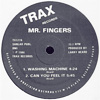
Mr. Fingers — Can you feel it? 1986
From Washing machine EP, Trax Records
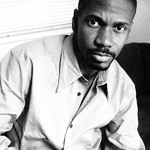
Larry Heard
Fingers Inc.
Can you feel it
1988
In a new version of the song Chuck Roberts calls out throwing his hands upon his cassock: “Let the house music begin!”. In a version of 1986 every listener can claim the same idea: “Let the house music started!”—that very special music having warm atmosphere, melancholic motive, some jazz pieces and a bit sentimental. Can you feel prototype was recorded in the end of 1984 (along with several other tracks on first Heard's records) and was mixed in December 1985 when Larry got his new keyboard Roland Jupiter 6. This vitally important instrument (costing about of $3000 dollars back then) is responsible both for the recognizable bass line that characterizes all Heard‘s tracks and for modulations that would become one of the basic attributes of deep house later on. By the moment of the track edition under its first label—Trax Records—instrumental version of Can you feel it had already conquered the top of the local clubs tape rotation.

The first deep house synth.
“I remember where it all started,—smiles Larry talking about creating Can you feel it,—It was winter, 1985, back then I was renting an apartment with a stunning window view of Chicago. One day I was looking through the window when suddenly it began to snow. All my friends that were outdoors that night can still remember snowflakes falling down to the rhythm of playing music. That very moment one friend of mine suggested the name Can you feel it to this track (for a long time I couldn’t pick up the right one and asked all my friends to give me a hand with that)”.
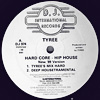
Tyree — Hard core - Hip house (Joe Smooth’s too deep remix) 1988
Remix Joseph Welbon Jr.
From Hard core - Hip house single, D.J. International Records
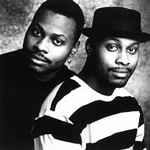
Burrell brothers. Reginald Burrell with his hat on

N.Y. House’n Authority — APT 3B 1989
From APT. EP, Nu Groove Records
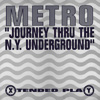
Metro — Brownstone express 1990
From Journey thru the N.Y. underground EP, Republic Records
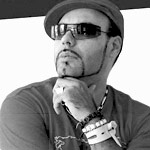
Roger Sanchez
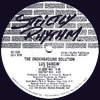
Underground Solution — Luv dancin’ 1990
From Luv dancin’ single, Strictly Rhythm
Can you feel it of 1988 could probably be called kind of a breakthrough in house music (it definitely became its classic) but still was a way far from a complete deep house as it looks like now. In 1988 there was no coherent classification of house music—we could only speak of acid house as an easily recognized variety of the genre and of Paul Oakenfold’s Balearic parties somewhere in London. Today house music as a symbol of modern, crazy and energetic times is mixed with different styles and musicians’ experimental challenges: hip-hop, disco, Latin music, funk, melodic piano riffs and whatever else is there—and gradually something clear and available comes out to the scene. As for now when they speak or write about house music in press today it is more about acid house with an emotional and melodic foundation. (FYI: here and therefore for your convenience we will enclose the term “Deep House” in quotation marks when we speak about seeming deep house in contradistinction to the real one with music examples and samples).
Jamie Principle
Your love
1984
Deep as an epithet has quite a few meanings. Each of them one way or another characterizes this new music genre, even if it’s not so clear and evident. Deep means not only something rich and profound but also something serious, introspective, mystical, hard-to-reach, with a hint of intellectual content, and finally, deeply sensual. That is music full of emotions like Your love by Jamie Principle—isn’t that deep enough?
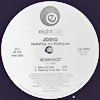
Jorio feat. Jay Rodrigues — Romance (Sax mix) 1991
From Push it to the limit single, Eightball Records
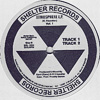
Kerri Chandler — Track 1 1993
From Atmosphere EP, 157 Shelter Records
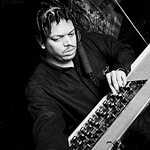
Kerri Chandler
In other words “deep house” of 1988 is a pleasant positive composition, where the singer plays the main role, and nontrivial background helps him share his feelings with the public. “Deep House” is an exact opposite of soulless and gurgling acid house that has filled the space of young people’s minds and all the music shelves. And the name of this new music wave is quite appropriate—deep—meaning something smooth and steady in contrast to scratchy and corrosive acid house.
Here is what used to be called “deep house” long ago
Here is what used to be called “deep house” long ago
Music critic and columnist Simon Reynolds considers that “deep house” (at least as it used to be interpreted) has always been a way for black musicians to express themselves about sex, gender or racial discrimination. The track Baby wants to ride by Jamie Principle is also kind of protest, Simon says, as it has a hidden erotic subtext. Distant planet by Larry Heard in association with Fingers Inc. has the lines about segregation. Promised land by Joe Smooth talks about a great dream of black people freedom. All these compositions were published within a year and supported one common tendency. Most clearly it appears in Can you feel it track of 1988 edition with the recitation of the non-existent racial, religious and national boundaries in house music.
Larry Heard himself accuses Hot Mix 5 of the occasional appearance of the preacher in this track and blames those music hooligans that applied the famous speeches of Martin Luther King Jr., Malcolm X and Angela Davis (talking for the rights of black people) in the tracks. By the way you can hear a famous speech of Martin Luther King Jr. (I have a dream) in Can you feel it track, too. Generally speaking an issue of racism that was very popular in the United States those years pervaded this new music direction as well. And the authors of the songs got a possibility to talk out what is really important from their new musical tribune.
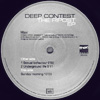
Deep Contest — Sunday morning 1993
From Ripost EP, Fnac Music Dance Division

Nuages — Move 1994
From Blanc EP, F Communications
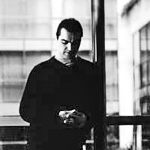
Ludovic Navarre
However, the creators’ lives were not only about protests. Reynolds also analyzes the inheritance of musical traditions—an “early deep house" was combining a solid rhythm-and-blues style and Philly soul (where disco took its roots) with a powerful female vocal in continuation. His opinion and understanding of this music have an confirmation in the compilation edited under DJ International label in 1988—The original house sound of Chicago: Deep house, vol. 1. Most likely that is the first release that can really be called house music in the true sense of the word. And by the way that one appeared to be an award-winning discovery of 1988 even if it was wrongly interpreted as first.

From this point of view today we can come to a conclusion that this collection’s content (for example singles Baby wants to ride, Someday, Distant planet etc.) actually has less in common with deep house music. And that was the conclusion all the Chicago musicians had also come to in the end of 80s. Therefore all new albums and discs from New York that started to come in contained the same music but under the different name—garage house, or just garage. This kind of music had first appeared in one of the NY clubs—Paradise Garage (that was where garage music had got its name from) where soul, disco and gospel were really popular. Within 10 years garage house could become a real cultural phenomenon brought up several generations of listeners.
Later on we had a great semantic change of the definitions that took place in the big city. (Many articles of that time deep house and garage house music were mentioned by slash—deep/garage house). Vocal house (which is often called soulful as it is so deep and sincere) that had been uncertain for a long period of time finally found its name, labels and the support of the colleagues. Existing in the underground for a long period of time real deep house (that appeared to live inside of an imitative one first) has finally become a complete independent music genre with its specific features that are still very recognizable nowadays.
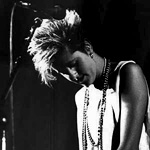
Tracey Thorn—the unique voice of Everything But the Girl duo
From the stylistic point of view deep house music is instrumental. Vocal is used but not too often—mostly as cappella pieces taken from other plates or well-known voice samples. Other words music itself is much more important in deep house than some soulful tunes (while in similar garage house it’s just the opposite). For a long time, by the way, every track containing vocal elements would be automatically called garage house. Generally speaking there are very few ‘pure’ deep house tracks in compliance with all the requirements of the style—including its usual sweet melancholy and hasteless. ‘Pure’ deep house is always recorded with a vocal in the background that doesn’t overlap the musical accompaniment but rather complements it. One of such tracks is a nine-minute remix of Kevin Jost on Five fathoms. It is noteworthy that the original composition is not any ‘less deep’ than its remix.
Original album version
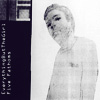
EBTG — Five fathoms (Kevin Yost enlightment remix) 1999
Vocal Tracey Thorn
Remix Kevin Yost
From Five fathoms single, Virgin

Blue Six — Sweet love 1999
Vocal Lysa Trenier
From Sweet love single, Wave Music

Rurals — Breathe 2001
Vocal Marie Tweek
From Sweeter sounds album, Peng
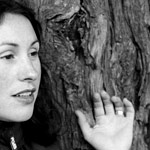
Marie Tweek
Predominantly deep house music sounds gently: an even bit of the cold bass sound is lightly seasoned with extra percussion; the edges of drums are rounded; the rhythm is smooth (you can often hear the comparison with a human touch—as the symbol of music made by people and for people—it is not synthetic, but sentimental, it has some kind of certain density or even some material guise). The bass line is hidden behind the drums, but its presence is still quite noticeable. In the foreground we can hear warm keyboards play—sometimes it’s vague and sometimes (it may differ from track to track) choppy sounding. In deep house music the analogy of old but charming varieties of electromechanical piano (Fender Rhodes or Wurlitzer electric piano as well as Hammond electronic organ) is often used. In order to strengthen the presence of jazz atmosphere the effect when sound instantly spillovers from one channel to another (often not very noticeable) is added.
Incredible keyboards
Incredible keyboards
Choppy sounding keyboards in deep house
Need to say that deep house is rather ascetic talking about the effects. Music experts often speak about contenting with little—when the musician tries to create a unique composition using a very small set of expressive means. At the same time the output is supposed to be smooth and different elements should make a uniform flow (smooth groove or necessary pump in other words). What is surely not forbidden is to use an echo and reverb effects. Their masterful application gives a deep surround sound to a track. This is especially true for the main motive that seems to be hidden behind a thick fog. Often the emulators of electric pianos and electronic organs fade into the background, giving the way to the flute, saxophone or other wind instruments that are so inherent in jazz music.
The sense of deep dive caused by most deep house music compositions can be compared with drops of watercolor, that are dissolved in water. The sound in deep house tracks seem to be a little turbidity instead of being crystal clear; it’s not coming up, it’s going down deep instead. It is like a spectral analysis upside down.
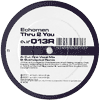
Echomen — Thru 2 you (CJ One vocal remix) 2001
Vocal Cheb Stewart
Remix Chris Scott
From Thru 2 you single, Airtight
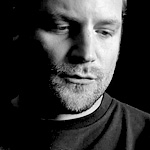
Jean Frank Cochois
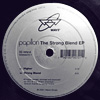
Papillon — Strong blend (Floppy Sounds fully roasted remix) 2001
Remix Rob Rives
From The strong blend EP, Wave Music
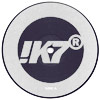
Wamdue Kids — That’s the feeling 1996
Vocal Chris Udoh
From Memory EP, !K7 Records

Bliss: Marc-George Andersen, Steffen Aaskoven
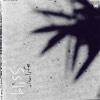
Bliss — Moon of Langa 2005
From Afterlife album, Music for Dreams
Deep house today has successfully been commercialized; it can be no longer called just a couple of medium-sized musical editions’ fun game. As mentioned above the word ‘deep’ is versatile and volume. Each label defines itself what should and what shouldn’t be attributed to deep house and which composition deserves to wear this proud name. Most of the time the releases that we see as a result look like a 20-years-old compilation just having the same name and including the melancholic vocal parties with the stories of the unseen. However you can still find good old deep house sounds that gives you that nostalgia feeling compared to nothing else.
Music & stories
12″ pages on social networks and weekly materials that you can’t find on the website. Cool electronic music videos, tune of the week, histories behind albums and FridayFive tracks. Join!